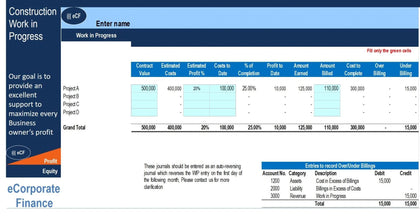Rental Property Income and Expenses Excel Spreadsheet
Rental Property Income and Expenses Excel Spreadsheet
Available:
In Stock
$0.00
All business owners hope their enterprises will be profitable. You invest in your business to watch that investment grow. But to know whether or not your business is performing to your expectations, you need to maintain rental accounting records to track its progress.
For owners who rent real estate to others, the free Rental Property Excel spreadsheet is an excellent rental property accounting tool for tracking and understanding the business’s rental income, its expenses, and the net income that results from its business activities.
To make template easily accessible and customizable, we’ve built it in Excel. To up your financial game and properly track your rental property income and expenses, you only need to download our template, open it, and enter your data.
First, note that the template is designed to be used by businesses renting either commercial or residential properties to others (hence the name, Rental Property Expense Worksheet). The business may rent out its own real estate as well as manage real properties for others. But, the worksheet does not account for real estate purchases or sales.
The spreadsheet is easily adaptable to other types of rental businesses. However, for the purposes of making examples and explanations, we’ll constrain our descriptions in this article to its use for tracking activities associated with rental real estate.
The template is easily completed. It can be used by the business’s owner or its property manager to quickly estimate income and/or profitability of either a single property, or of all properties owned or managed by the enterprise.
Note that this template does not track or report the business’s cash flow. The spreadsheet is flexible, however. Although not designed to serve as the sole source of accounting information for the business, it can be modified to include any information you feel you need for your rental property bookkeeping.
By diligent use of this spreadsheet, the owner or their manager can follow the financial progress of the business as it moves through a twelve-month fiscal year. For our purposes, we’ve assumed that the business’s fiscal and tax year begins on January 1st and ends on December 31st. But the template can be adjusted for any twelve-month period desired.
For owners who rent real estate to others, the free Rental Property Excel spreadsheet is an excellent rental property accounting tool for tracking and understanding the business’s rental income, its expenses, and the net income that results from its business activities.
To make template easily accessible and customizable, we’ve built it in Excel. To up your financial game and properly track your rental property income and expenses, you only need to download our template, open it, and enter your data.
First, note that the template is designed to be used by businesses renting either commercial or residential properties to others (hence the name, Rental Property Expense Worksheet). The business may rent out its own real estate as well as manage real properties for others. But, the worksheet does not account for real estate purchases or sales.
The spreadsheet is easily adaptable to other types of rental businesses. However, for the purposes of making examples and explanations, we’ll constrain our descriptions in this article to its use for tracking activities associated with rental real estate.
The template is easily completed. It can be used by the business’s owner or its property manager to quickly estimate income and/or profitability of either a single property, or of all properties owned or managed by the enterprise.
Note that this template does not track or report the business’s cash flow. The spreadsheet is flexible, however. Although not designed to serve as the sole source of accounting information for the business, it can be modified to include any information you feel you need for your rental property bookkeeping.
By diligent use of this spreadsheet, the owner or their manager can follow the financial progress of the business as it moves through a twelve-month fiscal year. For our purposes, we’ve assumed that the business’s fiscal and tax year begins on January 1st and ends on December 31st. But the template can be adjusted for any twelve-month period desired.





















